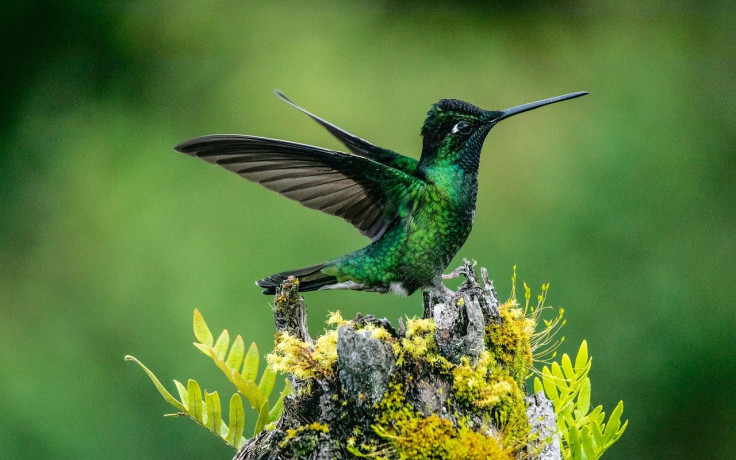'Lost' Hummingbird With Stunning Feathers Rediscovered In Colombia: 'Incredible Stroke Of Luck' [Photo]
KEY POINTS
- It was rediscovered by an "experienced local birdwatcher" by surprise
- It was spotted in an unprotected area, prompting calls for conservation
- This sparks hope for the future of the critically endangered species
Scientists have rediscovered a very rare hummingbird species that has stunning iridescent feathers. It was among the top 10 most wanted lost birds.
Santa Marta Sabrewing (Campylopterus phainopeplus) has been a rather elusive species, Re:Wild noted in a news release. It was collected for the first time in 1946, and the last documentation of it in 2010 was also the first time it was photographed.
Its absence for all those years earned it a place on the list of the "top 10 most wanted lost birds." However, "experienced local birdwatcher" Yurgen Vega has rediscovered the species in Colombia recently while studying endemic birds in the Sierra Nevada de Santa Marta, according to Re:Wild.
"This sighting was a complete surprise, but a very welcome one," Vega said in the news release. "As I was leaving the area where I had been working, a hummingbird caught my attention. I got out my binoculars and was shocked to see that it was a Santa Marta Sabrewing, and in an incredible stroke of luck the hummingbird perched on a branch giving me time to take photos and video."
Re:Wild said this marks only the second documented sighting of the species. One can see just how stunning the bird is in the photo shared by American Bird Conservancy (ABC).
A rare hummingbird, the Santa Marta Sabrewing, has been rediscovered in Colombia thanks to experienced local birdwatcher Yurgen Vega. Read more about the rediscovery: https://t.co/t4NhhXBL7s. pic.twitter.com/qMm4nOBFM4
— American Bird Conservancy (@ABCbirds) August 4, 2022
However, there are also concerns for the Santa Marta Sabrewing as researchers believe its population is "very small and decreasing," according to BirdLife International, which is collaborating with Re:Wild and ABC in the Search for lost birds. Under the International Union for Conservation of Nature (IUCN) Red List of Threatened Species, the Santa Marta Sabrewing is listed as "critically endangered," with the organization also noting its population to be "decreasing."
"(W)e found it in an area that is unprotected, which means that it is critically important for conservationists, local communities and government institutions to work together to learn more about the hummingbirds and protect them and their habitat before it's too late," Esteban Botero-Delgadillo of SELVA: Research for Conservation in the Neotropics said, as per the news releases.
As such, the experts are hoping that the rediscovery will spark conservation action in the area, which has been greatly impacted by agriculture that has left only about 15% of the forest still intact.
Still, the rediscovery sparks hope for the species, especially since its rarity means scientists still don't know much about it despite having been first sighted decades ago.
🐤 A bird from our top 10 most wanted lost birds list has been rediscovered!
— BirdLife International (@BirdLife_News) August 5, 2022
👀 The Santa Marta Sabrewing has been spotted for the first time since 2010, bringing hope for this Critically Endangered species. #ConservationOptimism @rewild @ABCbirds
➡️ https://t.co/dyzViqKPM6
"It's like seeing a phantom," John C. Mittermeier of ABC said. "When we announced the top 10 most wanted lost birds last year, we hoped that it would inspire birders to look for these species. And as this rediscovery shows, sometimes lost species re-emerge when we least expect it."
Only recently, researchers also discovered a magnolia tree that had been lost for 97 long years. The chances of finding it were said to be "one in a million," but it was still rediscovered, thanks to researchers' efforts.

© Copyright IBTimes 2024. All rights reserved.





















